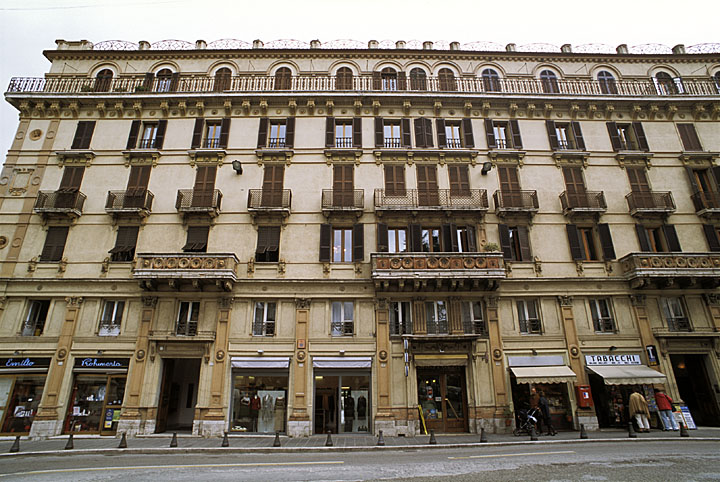
|
Technical Notes on the Photography
Most of my photographs were shot using two Nikon F3HP cameras and four Nikkor lenses, the 20mm f/2.8, the 24mm f/2.8, the 28mm f/2.0, and the 35mm f/2.0. I would estimate that 85% of the images were taken with the 20mm lens, Serial Number 215827. I purchased this lens new in 1986 or 1987. It is of the AIs series, not the later AF series. There are a number of earlier 20mm Nikkors with different maximum apertures and formulations. This lens is generally regarded by photographers as one of the better extreme wide-angle rectilinear lenses, but it is one of the poorer lenses in terms of its perspective errors. Unlike many retrofocus wide-angle lenses, this one does not suffer from barrel distortion but rather the more complex "moustache" distortion. The outer edges of the field have pincushion distortion, leading to the complex pattern of distortion that is clearly evident in the photograph above. The actual amount of the distortion is not large, but the effect is rather disturbing in some photographs and can be quite confusing in some circumstances. The curb at the bottom and the roof line at the top are more or less straight lines in reality, but are rendered as wavy lines. Anyone attempting to perform photogrammetry using these images had better be aware of this error! A few photographs were taken with a Nikon F and a 35mm f/2.0 dating from 1972 and 1967 respectively (and used to photograph George McGovern's 1972 run for president). This lens was probably the first really good high-speed wide-angle lens made, and even today it makes lovely images. I have a much newer lens of the same apparent formulation that was used on the F3HPs, but it does not seem to be quite as good as the older lens. This old equipement was used (without light meter!) to make photographs of Nancy, Strasbourg, Morocco, and Lisbon (earlier images only). I shoot color negative film whenever I have to guess the exposure, as negative film has better latitute than slide film. All early work was shot on color negative material, but I have used mostly diapositive film since 1998, first from Kodak and later from Fuji. Fuji Astia is uniquely well suited to urban photography, as its wide dynamic range and natural colors are perfectly suited to the high contrast one frequently encounters in urban scenes. This ISO 100 film has very fine grain and excellent sharpness. All scans were made using a Nikon CoolScan 4000 LS set to half its maximum resolution of 4000 DPI. This scanner has proven highly satisfactory and delivers raw 16-bit TIFFs of high and consistent quality. The only problems I have encountered were with frames at the end of curly strips, which tend to drift out of focus at one end due to the curvature of the film. For some time now, I have been cutting my film in strips of 3, 4, 5, or 6 frames in order to maintain as many good frames as possible in the middle of the strip, thus avoiding the problem. This is inconvenient but does result in considerably sharper scans. Film should never be stored in rolls; edit and cut your film as soon as possible. All images not originally scanned on the CoolScan were rescanned in the fall of 2003, but these new scans have only been installed on this sub-section of Carfree.com; many images elsewhere on the site are still from the original Kodak scans, which were quite good considering how long ago they were made. I have as yet very little experience with digital photography due mainly to the continuing absence of good equipment for extreme wide-angle photography except possibly at extremely high prices. I'll sell my beloved F3s as soon as an acceptable digital replacement is available, as the cost in time and money of silver-based photography compares poorly with digital photography. It appears that the quality of the 6 megapixel cameras is already better than 100-speed color film, but it is still not practical to mount a 20mm-equivalent lens on these cameras. |
Back to City Design Library
E-mail |